Why Do Marching Bands Perform At Halftime?
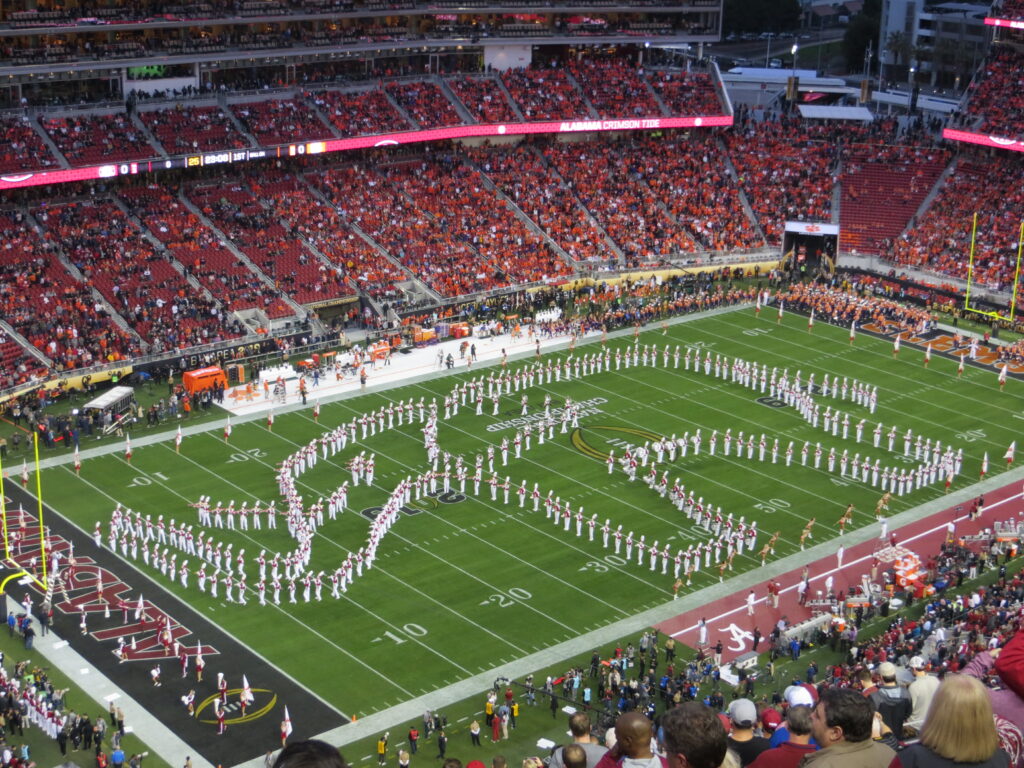
The relationship between football and marching band is one that goes back for centuries! In this day-and-age, it’s difficult to even imagine a high school or college football game without a band or two present to hype up the fans and maintain an almost-holy football tradition. The performance of marching bands at halftime can be described as a sort of symbiotic relationship; wherein band became more popular thanks to their appearances at games, and football became more fun for spectators thanks to bands’ contributions.
Marching bands perform at halftime because of the evolution of marching band’s military roots, the need to entertain fans and energize players, and gain experience performing for crowds.
From its beginnings to today, marching band has held many of its same functions as it did in its army days, but simply evolved along with the country and its education culture.
Marching Band’s Roots in the Military
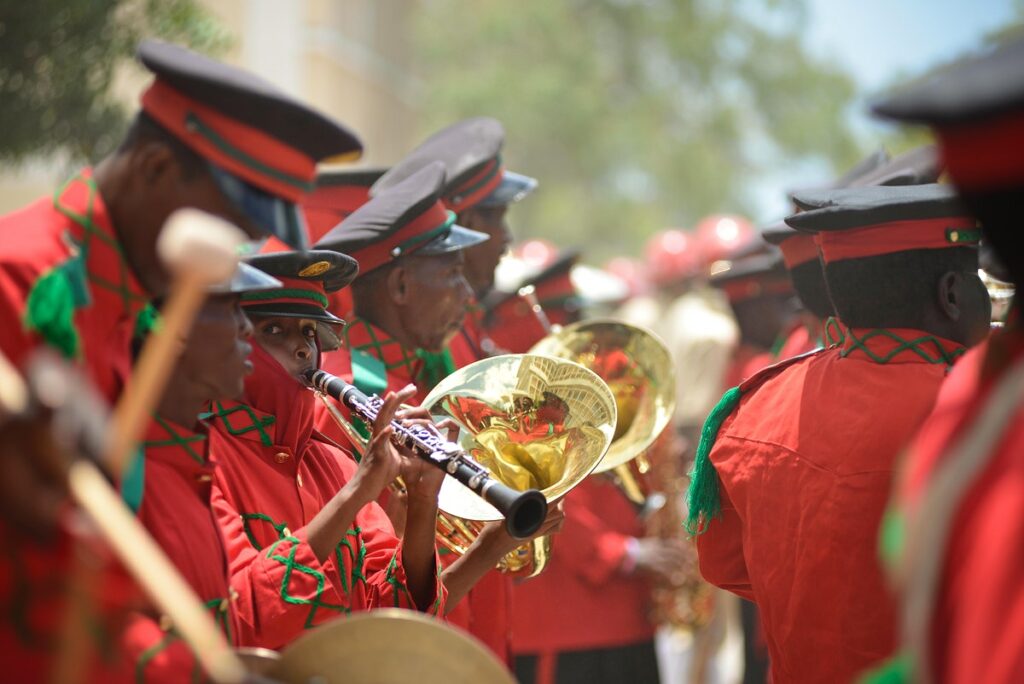
The original concept of marching bands was born out of militaries marching into battle. Many may first think of patriotic marches from the American Revolutionary War, but marching bands as we know them likely originated in the 11th century from the Ottomans (Aramco World).
Marching bands evolved from there into the Baroque period in Europe and on into the 18th century with the creation of the British Military Band.
The music was often used as a method of communication for the army. The loud drumline was used as an efficient means to rally and call-to-arms militia troops who often lived far out in the countryside or on farms. On the fields of battle, different cadences and marches were the most effective way to indicate to an army what actions to take; such as advance or stand. In the clamor of battle, the band would be clearly heard.
Military bands also played a key role in maintaining troops’ morale leading up to or even during the heat of battle. The necessity of patriotic songs for armies is, of course, the origin of the genre of music we know today as a march.
At its birth and initial growth, marching band became a bastion of discipline, rallying, and patriotism/pride, which later lent itself well to colleges wanting a way to drum up the same sentiments among students and fans at football games.
The First College Marching Bands
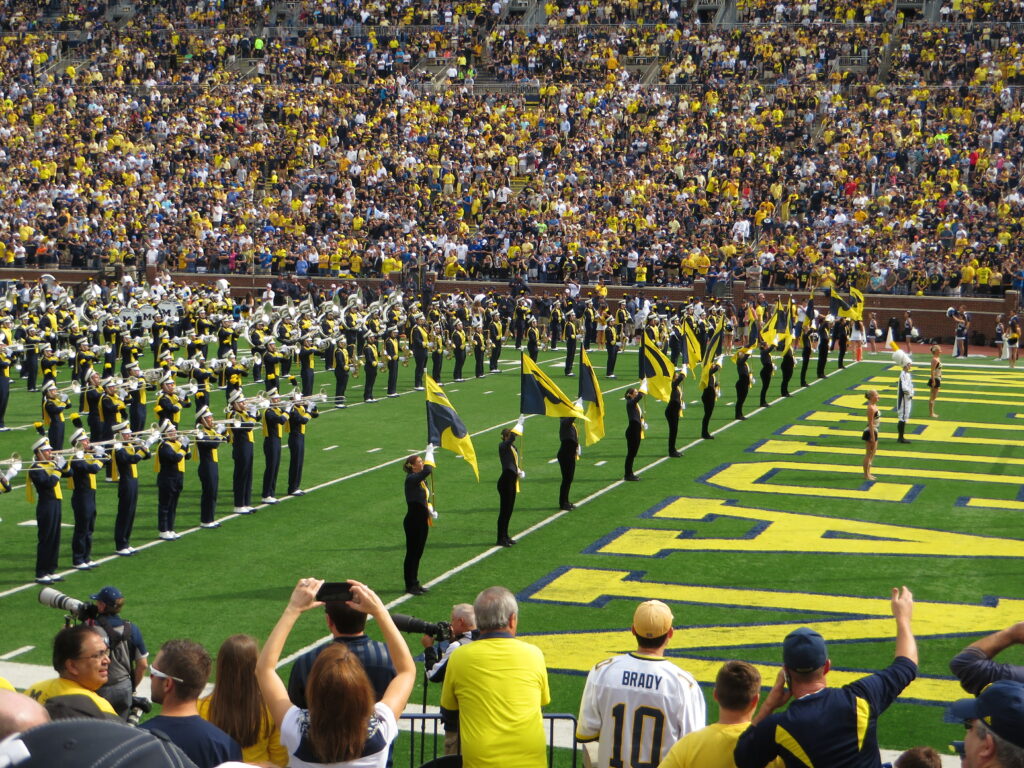
The very first college marching band is The University of Notre Dame’s “Band of the Fighting Irish”. The band was formed shortly after the university’s founding in 1842 and played at the school’s first graduation ceremony in 1846. In 1887, the band performed at its first football game, cementing their legacy as the first marching band to play at a football game.
Today the Band of the Fighting Irish is still heralded as one of the greatest college marching bands in the country.
Years later in 1907, the Purdue “All American” Marching Band was the first to break traditional marching ranks and incorporate unique formations and shapes. Purdue achieved this first with their iconic Block P shape and continued to innovate from there.
The first band to perform at a football game halftime was the University of Illinois’ “Marching Illini” in 1907. Director Albert Harding was eager to find ways in which to incorporate the school’s band with regular campus life and activities, and a halftime performance was one of his innovations (Illinois Distributed Museum).
With this performance, a tradition was born! John Phillip Sousa himself later called The Marching Illini “The World’s Greatest Marching Band”.
It was also during this time that the concept of a “school song” to show dedication and pride for one’s school was born. T.J. Hurley composed “For Boston” for Boston College in 1885, and other pieces like it soon followed to be performed at football games, halftime shows, and other school events.
Many university school songs are used by middle and high schools today as their own school songs.
Marching Band Halftime Shows of Today
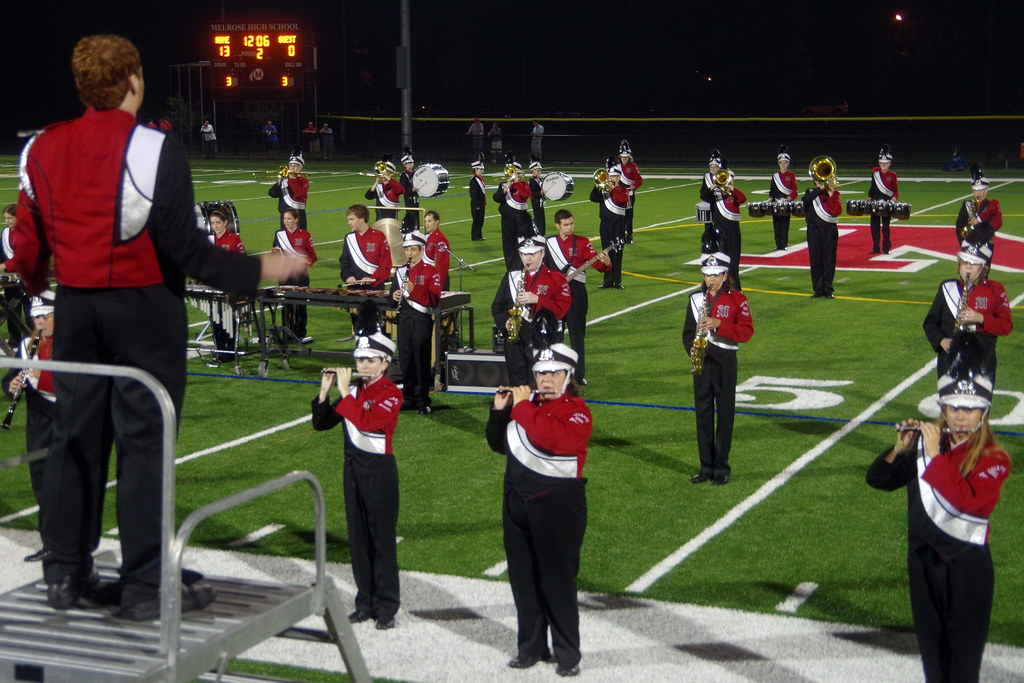
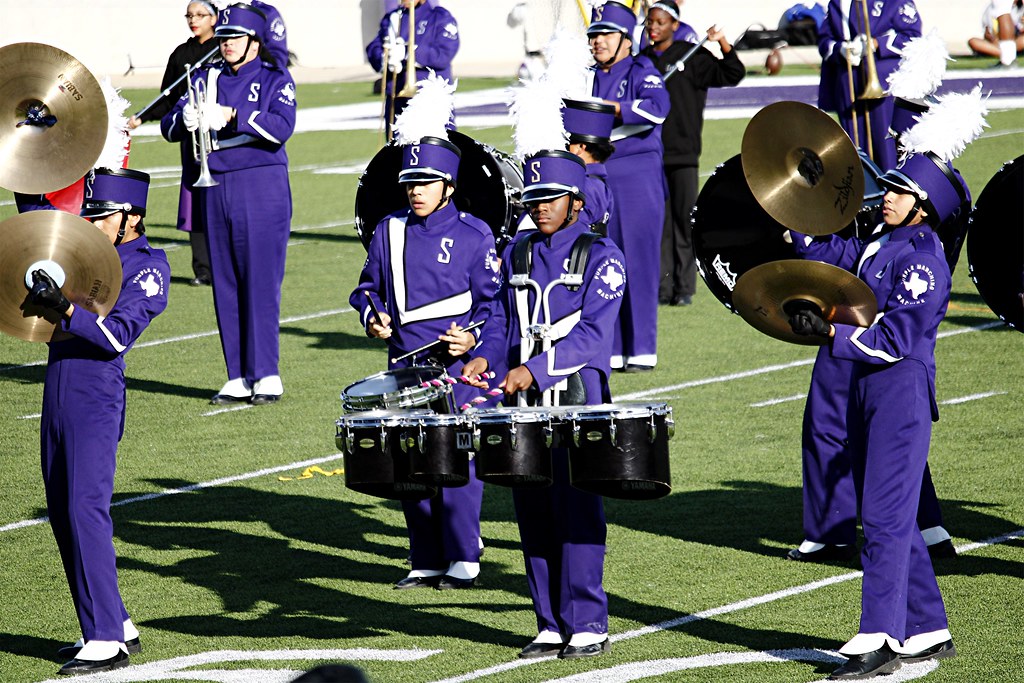
Today, you would be hard-pressed to find a high school or college football game without a marching band playing tunes in between plays on the field and performing a whole show during halftime.
College bands today perform at football games to entertain the fans and support their team. When the band is in the stands, fans will often hear snippets of songs in between plays while their team is on offense. These can be patriotic or school songs, something recognizable and popular for the fans, or even something just plain rowdy and loud. This is of course to energize their own players, but also can be (purposely) distracting for members of the opposite team!
In terms of halftime, there are a few different performance styles to choose from.
Some bands, like the Texas Fightin’ Aggie Band at Texas A&M, are known for their militaristic-style of performance, with impressively disciplined and technical drill and traditional Texas tunes.
Other bands, like the Ohio State Marching Band, are known for fun shows with lots of popular songs and unique nontraditional drill.
For high schools, halftime is the perfect opportunity to not only entertain, but also showcase their competitive marching show. This is especially helpful for a few reasons!
It is crucial that groups have the opportunity to get a performance run-through with a crowd to prepare for contest settings. In addition, not only do bands have the chance to run straight through their show, but they can practice getting marchers, props, and the front ensemble onto the field in a timely and efficient manner; something which is strictly monitored at contests and can affect a band’s score.
Furthermore, for some groups, football games are some of the only times they get practice on an actual football field! This may seem like a small detail, but marching on turf is very different from marching on a gym floor or parking lot, so the experience is extremely beneficial.
Lastly, high school marching contests are usually held on Saturdays, so a performance under the Friday Night Lights is an excellent opportunity for band directors to get a feel for how prepared their performers are for the next day’s events.
Conclusion
Marching band’s extensive history in performing at halftime has brought it from the military battles of the 18th century to the modern-day “battles” of football. School football and marching band owe their individual successes to each other. Band wouldn’t be where it is today without football sharing its platform, and many would agree that school football without a marching band just isn’t as fun!